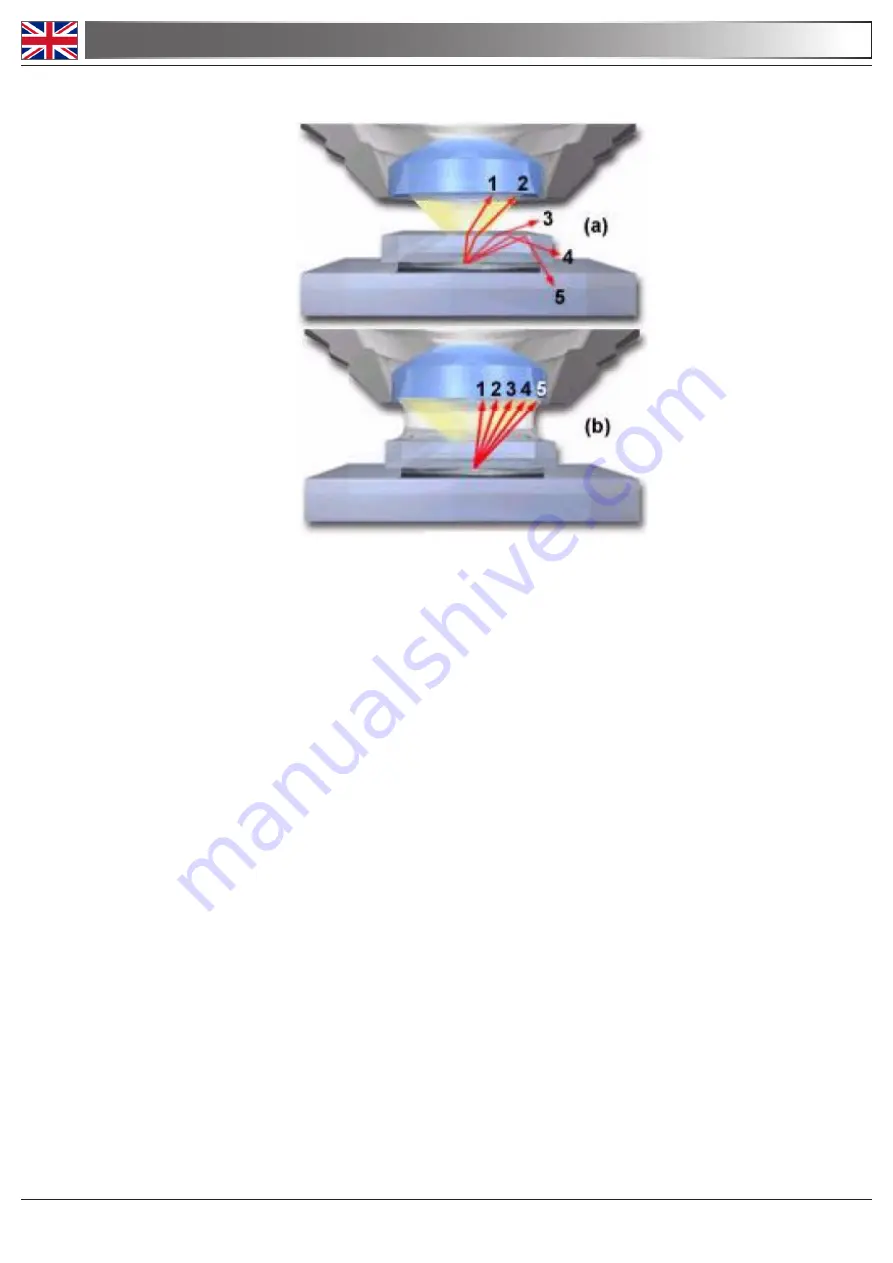
Page 4
Figure 1 Oil immersion and numerical aperture
The principle of oil immersion is demonstrated in Figure 1 where individual light rays are traced
through the specimen and either pass into the objective or are refracted in other directions. Figure 1
(a) illustrates the case of a dry objective with five rays (labeled 1 through 5) shown passing through
a sample that is covered with a coverslip. These rays are refracted at the coverslip-air interface and
only the two rays closest to the optical axis (rays 1 and 2) of the microscope have the appropriate
angle to enter the objective front lens. The third ray is refracted at an angle of about 30 degrees to
the coverslip and does not enter the objective. The last two rays (4 and 5) are internally reflected
back through the coverslip and, along with the third ray, contribute to internal reflections of light at
glass surfaces that tend degrade image resolution. When air is replaced by oil of the same refractive
index as glass, shown in Figure 1(b), the light rays now pass straight through the glass-oil interface
without deviation due to refraction. The numerical aperture is thus increased by the factor of n, the
refractive index of oil.
Microscope objectives designed for use with immersion oil have a number of advantages over those
that are used dry. Immersion objectives are typically of higher correction (either fluorite or apochro
-
matic) and can have working numerical apertures up to 1.40 when used with immersion oil having
the proper dispersion and viscosity. These objectives allow the substage condenser diaphragm to
be opened to a greater degree, thus extending the illumination of the specimen and taking advanta
-
ge of the increased numerical aperture.
A factor that is commonly overlooked when using oil immersion objectives of increased numerical
aperture is limitations placed on the system by the substage condenser. In a situation where an oil
objective of NA = 1.40 is being used to image a specimen with a substage condenser of smaller
numerical aperture (1.0 for example), the lower numerical aperture of the condenser overrides that
of the objective and the total NA of the system is limited to 1.0, the numerical aperture of the con
-
denser.
2.0 PRINCIPLES OF IMMERSION MICROSCOPY



















